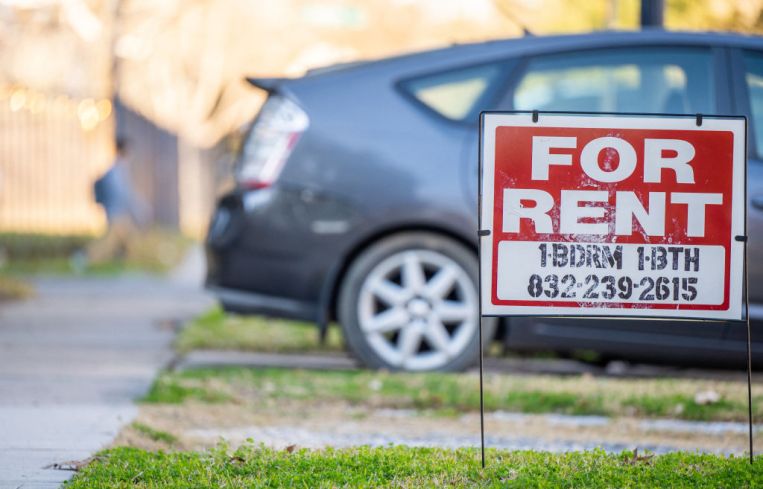Single-Family Rental Owners Haven’t Had It This Good in Years: Report
Yields are up — but price drops could spell trouble for institutional buyers
By Chava Gourarie April 6, 2023 8:00 am
reprints
While the for-sale housing market teeters and multifamily rental growth hits a wall, the single-family rental business is doing just fine. That’s according to a new report from real estate data firm Attom.
In fact, it’s doing better than last year.
The overheated housing market and higher mortgage rates have pushed would-be homeowners to continue renting in the majority of U.S. markets, even as housing prices are flatlining, according to research from rating firm S&P Global. That mismatch is proving a boon to institutional single-family landlords, while causing institutional single-family flippers a good deal of pain.
“Sharp mortgage rate increases have worsened housing affordability over the past year and ended a home-buying boom that relied on low interest rates,” the report stated. “Mortgage costs have nearly doubled, forcing more consumers to rent or to continue renting for longer.”
The gross rental yield on three-bedroom homes in the 212 counties that Attom analyzes is projected to be 7.5 percent over the course of 2023, up from 6.7 percent in 2022. And SFR rents are growing in over 90 percent of the counties analyzed — the same share of counties saw rents rise faster than home prices, ranging between a 5 percent and 20 percent growth rate across markets.
“Rents for single-family homes are growing while prices have flattened out, which has helped boost yields for landlords for the first time in at least several years,” said Rob Barber, chief executive officer at Attom.
That said, there is of course a range of returns.
Three of the five counties with the highest projected single-family rental yield were in Florida, with the highest (Indian River County, home to Vero Beach) reaching 15 percent. For counties with more than 1 million residents, the highest rental yields were in the counties that include Chicago, Cleveland, suburban Detroit and West Palm Beach, which all clocked in at an 8.7 percent rental yield. The highest yield growth was in Orange County outside Los Angeles, at 42.7 percent.

Some of the few places where rental yields were down were Plano, Texas; St. Louis; and Nassau County on Long Island. Some of the lowest returns were in the D.C. region — in Loudon, Montgomery and Fairfax counties, all of which clocked in between 4 and 5 percent.
While rental yields are calculated by factoring in housing prices, the markets with the highest rent growth independent of home prices are distinct, and mostly clustered in New Jersey and South Florida, according to Attom’s raw data reviewed by Commercial Observer. Camden, Union, Bergen and Morris counties in New Jersey all saw at least a 30 percent increase in single-family asking rents between 2021 and 2022, while the three South Florida counties registered increases of between 33 and 39 percent increases.
Wage growth in those same counties did not come even close to matching the rising rental rates. Miami-Dade had the highest wage growth in South Florida at 8 percent compared with a 35 percent increase in rents, while in New Jersey, Camden was the county with the biggest discrepancy, with a 3 percent increase in wages compared with a 47 percent increase in rent.
“Sharp mortgage rate increases have worsened housing affordability over the past year and ended a home-buying boom that relied on low interest rates,” stated a report from S&P. “Mortgage costs have nearly doubled, forcing more consumers to rent or to continue renting for longer.”
The lopsided returns from single-family sales and rents are affecting the institutional buyers of both. Online homebuyer Opendoor was the largest buyer by far of single-family homes in 2022, acquiring over 21,000 homes, according to Attom data analyzed by Commercial Observer.
Opendoor bought many single-family homes at the top of the market, then sold them at a discount as the market stalled, the Wall Street Journal reported. In the final quarter of the year, 77 percent of Opendoor’s home sales were priced below what they paid, resulting in close to $4 billion in losses. Offerpad, another online homebuyer, was the fourth most prolific buyer, snapping up around 5,000 homes in 2022, and it also saw dramatic losses in the fourth quarter.
In contrast, the three institutional buyers that round out the top five were Cerberus, The Amherst Group and Tricon Residential, all of which manage single-family rental arms. Tricon, the only public company among the three, saw its revenue from single-family rentals increase to $181 million in the fourth quarter, up from $125 million the year before. That was due to both an increase in Tricon’s portfolio as well as a 9.4 percent increase in effective monthly rent, from $1,591 to $1,741, per the company’s fourth-quarter results.
In either case, whether institutional homebuyers are reselling homes or renting them out, conditions in each separate market can and will affect the outcome. And it may be the first time any of them are weathering a down market.
Chava Gourarie can be reached at cgourarie@commercialobserver.com.



